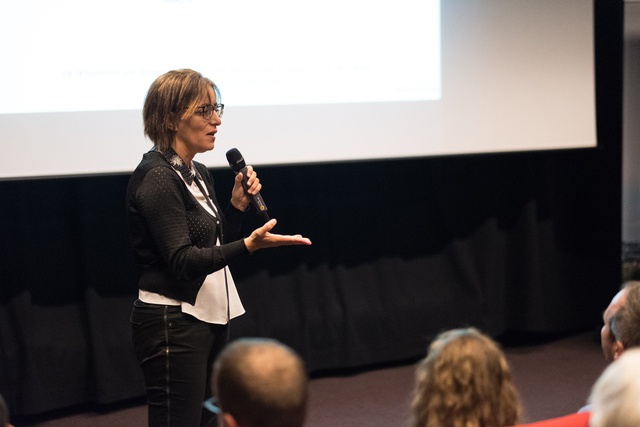Must do better
More bleak news – is there any other kind? – on the climate crisis front. Rapidly reducing emissions by the end of this decade to limit warming to 1.5 degrees C above pre-industrial levels, as agreed in Paris in 2015 and subsequently, is almost impossible.
That’s according to the Intergovernmental Panel on Climate Change (IPCC) report released in early April. “If we don’t achieve deep and rapid reductions during this decade – much more so than we are planning to do collectively – then limiting warming to 1.5 degrees is out of reach”, IPCC vice-chair Dr Andy Reisinger told Morning Report.

The IPCC’s stark conclusion was that a century of rising emissions must end before 2025 to keep global heating under 1.5C, beyond which severe impacts will increase further and many of the effects of climate breakdown will become irreversible. That’s just 30 months for governments around the world to implement their promises to reduce emissions and keep the target alive. Even then, that will still rely on a massive rollout of expensive and largely unproven carbon capture and storage technology that can suck CO2 from the air, as well as large-scale reforestation. In other words, pigs might fly. So, are we doomed?
Not exactly. About a week later, a modelling study in Nature showed that if countries stick to their net-zero pledges made at last year’s climate change conference, Cop26, then the Earth will probably limit warming to just below 2C by 2100. Yes, we’re overshooting the 1.5C target and there will be extreme suffering and the risk of abrupt catastrophic changes to the environment remains high. But, in a sea of gloom, it is progress of sorts. As the Guardian pointed out, before Cop26, targets were projected to result in 2.4C of heating and, in 2020, it was almost unimaginable that China and India would have net-zero commitments a year later. Following Cop26, 153 nations had submitted new climate pledges to the UN, with countries responsible for 75 per cent of global greenhouse gas emissions committing to reach net-zero between 2050 and 2070. What the Nature study shows is these pledges have made a 2C limit a possibility.

“This progress shows that the battle for countries and companies to sign up to net zero is being won. Climate policies helped spur rapid changes in energy markets, with renewables becoming increasingly competitive against fossil fuels, showing the world we have the technology to drive rapid emissions reductions.” There remains, however, a big if – it requires all nations to implement their pledges on time and in full. Not easy when many of the policies to do so are not in place. Plus, the thorny issue that the pledges include those of developing countries that have said their cuts can happen only with more financial and technical support.
While all this adds up to a hard ask, it shows what collective action might do. That includes making seemingly impossible things possible – leaving behind fossil fuels and making a rapid transition to low- or no-carbon energy, plus electrifying city transport systems and private vehicles.
Alarmingly, the IPPC report, Climate Change 2022: Mitigation of Climate Change, also shows the building sector is not playing its part. In fact, as Fast Company put it: “The building sector is dragging down global efforts to reduce carbon emissions.”

The report shows that while up to 61 per cent of building emissions could be cut by 2050 using technologies available today, it isn’t happening – due to policies that favour wasteful new construction and do little to encourage environmentally-minded retrofits. Co-author Yamina Saheb says ultimately it all comes down to a lack of regulation and that cities need to require zero-carbon buildings. To meet those requirements, architects must embrace more passive cooling strategies and bioclimatic design, in which buildings are designed according to the climate where they are located. “Instead of trying to adapt nature to your house, you should adapt your house to nature,” says Saheb, who is also in favour of banning single-family housing. “If you have new development, you should go for multi-family buildings because you need less land, fewer construction materials, and less energy.”
The report found that retrofitting is the single most effective strategy for developed countries to limit emissions from buildings. Saheb believes we need to make renovation mandatory to zero-carbon standards. “If we don’t have this required by law, it will never happen,” she told Dezeen.

Meanwhile, to help meet New Zealand’s commitment to net-zero carbon emissions by 2050, the Ministry of Business, Innovation and Employment (MBIE) is making progress reducing buildings’ embodied carbon with mandatory reporting and measurement requirements for whole-of-life carbon emissions due to be enabled from 2024–2029. It’s also developing rules for transforming buildings’ operational efficiency, proposing by 2035 to have a set of required levels of efficiency for energy use and water use and defining minimum indoor environmental quality measures – unfortunately only for new buildings at this stage, with future work planned to address the retrofitting sector at the back of the queue.
That’s despite MBIE acknowledging that existing buildings are projected to make up approximately 65 per cent of New Zealand’s building stock in 2050 and a similar proportion of emissions. Retrofitting of existing buildings should be beginning now as a key weapon of visible action in our Building for Climate Change programme. With 1.5C looking unreachable and 2C looming, we can, and must, do better.
Chris Barton is the current editor of Architecture New Zealand. He has been a respected architecture critic for Metro and multi-award winning journalist for many of the nation’s leading print media publications; he also holds a Master of Architecture from the University of Auckland.










